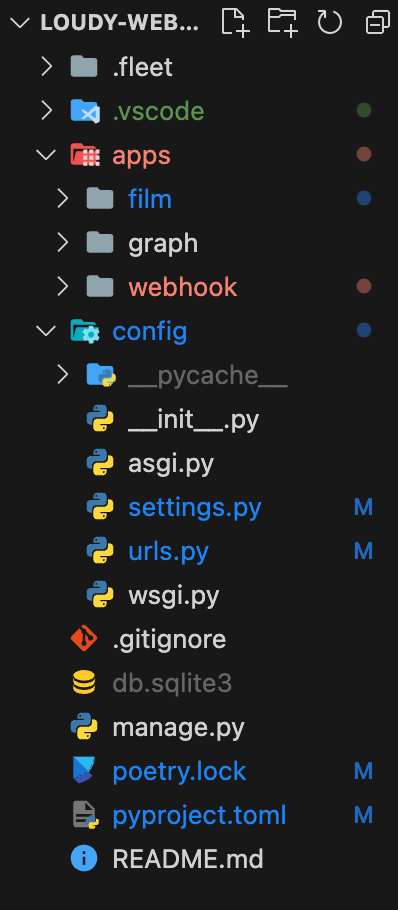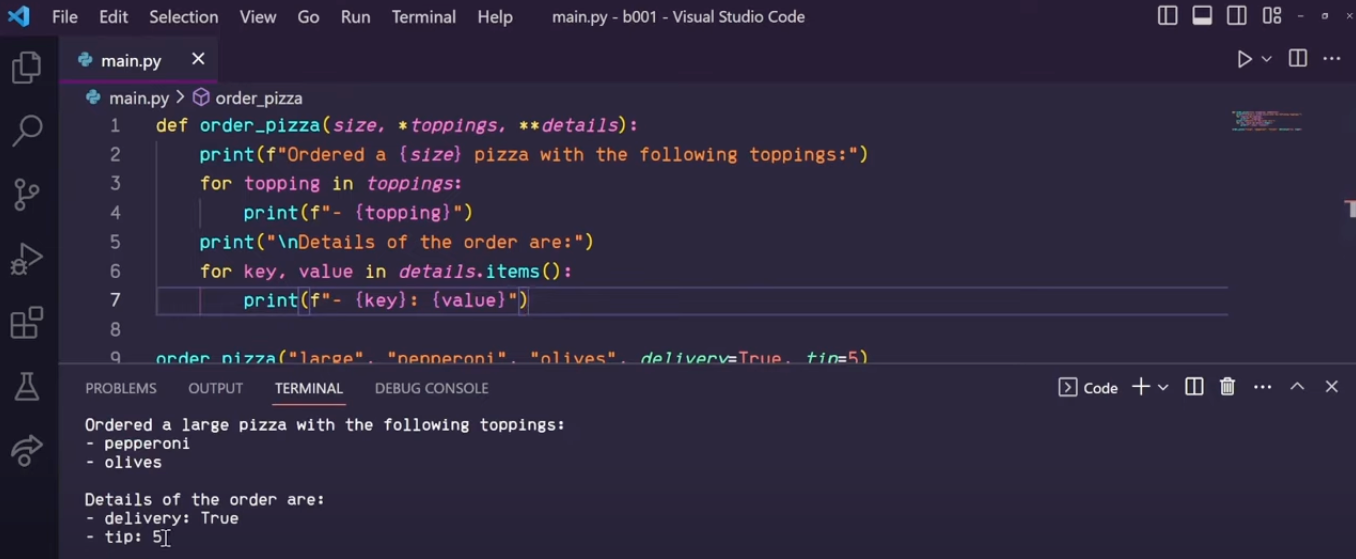Install python
brew install pythonInstall poetry
// Ubuntu
curl -sSL https://install.python-poetry.org | python3 -
// OSX
curl -sSL https://install.python-poetry.org | sed 's/symlinks=False/symlinks=True/' | python3 -Alias python3 to python
On macOS, there are several ways to alias python3 to python. Here are the best options, each with its own pros and cons:
1. Using .bashrc or .zshrc (Recommended for permanent alias):
-
Edit your shell configuration file:
- Open Terminal and run
nano ~/.bashrc(for Bash) ornano ~/.zshrc(for Zsh).
- Open Terminal and run
-
Add the following line:
alias python="python3"-
Save the file and reload your shell configuration:
source ~/.bashrc(for Bash) orsource ~/.zshrc(for Zsh).
Quick Tips
echo 'alias python="python3"' >> ~/.bashrc
How to solve Pylance 'missing imports' in vscode
In my case, the fastest solution when imports are not missing is to launch vscode from the virtual environment. Basically, activate the venv as always, and then
code .
Project initialize

create project folder
mkdir loudy-webserver
cd loudy-webserver/
poetry init
poetry init
poetry add Django
poetry add djangorestframework
entering virtual environment
poetry shell
folder of config
poetry run django-admin startproject config .
folder of apps
mkdir apps
cd apps
mkdir film
python manage.py startapp film apps/ film
Tips
If you want to structure project like this way, you need to added this line into
settings.pysys.path.insert(0, os.path.join(BASE_DIR, 'apps'))
後記
最後還是莫名會遇到 naming confilcts 的問題,最快的解決方法還是在根目錄(與
manage.py同層), 直接python manage.py [app name]再將資料夾搬進apps資料夾下。
running
python manage.py makemigrations
python manage.py migrate
python manage.py runserver 0.0.0.0:8000
DRF Integrate Swagger doc
poetry add drf-spectacularin config/settings.py add
REST_FRAMEWORK = {
"DEFAULT_SCHEMA_CLASS": "drf_spectacular.openapi.AutoSchema",
}
...
SPECTACULAR_SETTINGS = {
"TITLE": "DRF Todo List",
"DESCRIPTION": "This is a todo list for DRF practice.",
"VERSION": "1.0.0",
"SERVE_INCLUDE_SCHEMA": False,
}in config/urls.py add
from drf_spectacular import views as doc_views
urlpatterns = [
...
path("api/schema.json", doc_views.SpectacularJSONAPIView.as_view(), name="schema"),
path("api/swagger/", doc_views.SpectacularSwaggerView.as_view()),
path("api/redoc/", doc_views.SpectacularRedocView.as_view()),
]Sqlite GUI
While sqlite itself does not provide any network endpoints you can use a web gui such as sqlite-web.
Assuming you have python installed you can install it with
pip install sqlite-webOnce installed, start the web interface with:
sqlite_web my_database.dbBy default it runs on http://127.0.0.1:8080/ ie is only accesible from the localhost.
To make it visible on your LAN/WAN start it with:
sqlite_web --host 0.0.0.0 my_database.dbWhile running with --host 0.0.0.0 might be fine on your own home or corporate network, it’s a really bad idea to do it on a public host (even though the app allows setting a password). For remote access on a public host you will probably want to use the default binding on 127.0.0.1 and then forward the port over ssh or a vpn tunnel.
Setup python-redis
poetry add channels_redisdocker run --rm -p 6379:6379 redis:7# django_channels/settings.py
# Channels
# 新增 channel layers 設定
CHANNEL_LAYERS = {
"default": {
"BACKEND": "channels_redis.core.RedisChannelLayer",
"CONFIG": {
"hosts": [("127.0.0.1", 6379)],
},
},
}Django cors
poetry add django-cors-headers
在settings.py的INSTALLED_APPS加上corsheaders:
INSTALLED_APPS = (
...
'corsheaders',
...
)
在MIDDLEWARE_CLASSES加上:
MIDDLEWARE_CLASSES = (
...
'corsheaders.middleware.CorsMiddleware',
'django.middleware.common.CommonMiddleware',
...
)
Note
如果設定了USE_ETAGS=True,那麼CordMiddleware必須要在Django CommonMiddleware之前, 否則CORS headers就會因304 not-modified responses被遺失了.
設定方式是在settings.py中設定如下:
CORS_ORIGIN_ALLOW_ALL = True # 允許所有跨站請求, 且whitelist不會被使用
CORS_ORIGIN_ALLOW_ALL的預設值是False, 我們可以設定white list:
CORS_ORIGIN_WHITELIST = (
'localhost:9000', # 本機的不同port
'mysite.com',
...
)
WTF is *Args and **Kwargs
 https://www.youtube.com/watch?v=4jBJhCaNrWU
https://www.youtube.com/watch?v=4jBJhCaNrWU
Conclusion
*args handled tuple or list (Iterable)
**kwargs handled dictionary(key & value pairs)